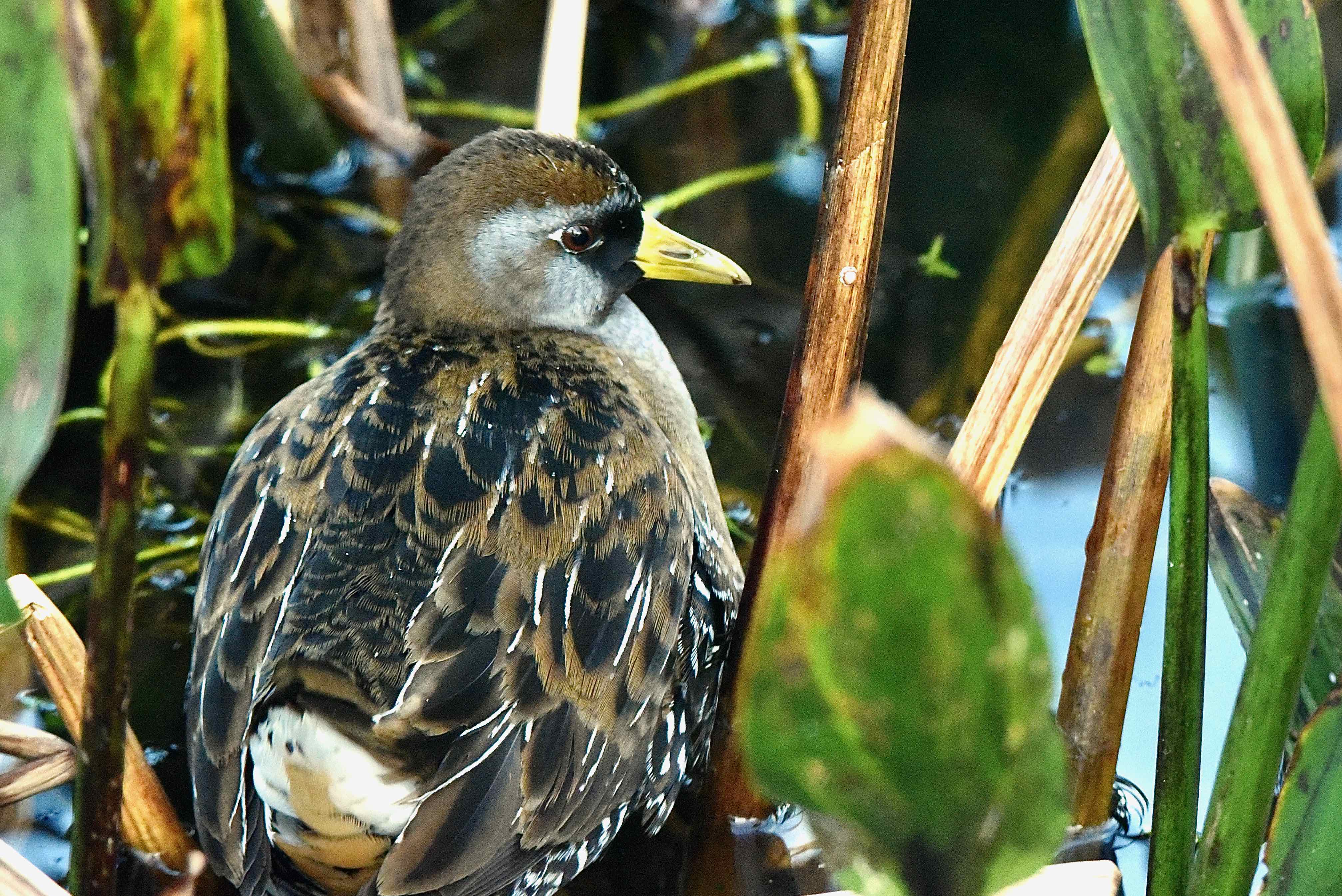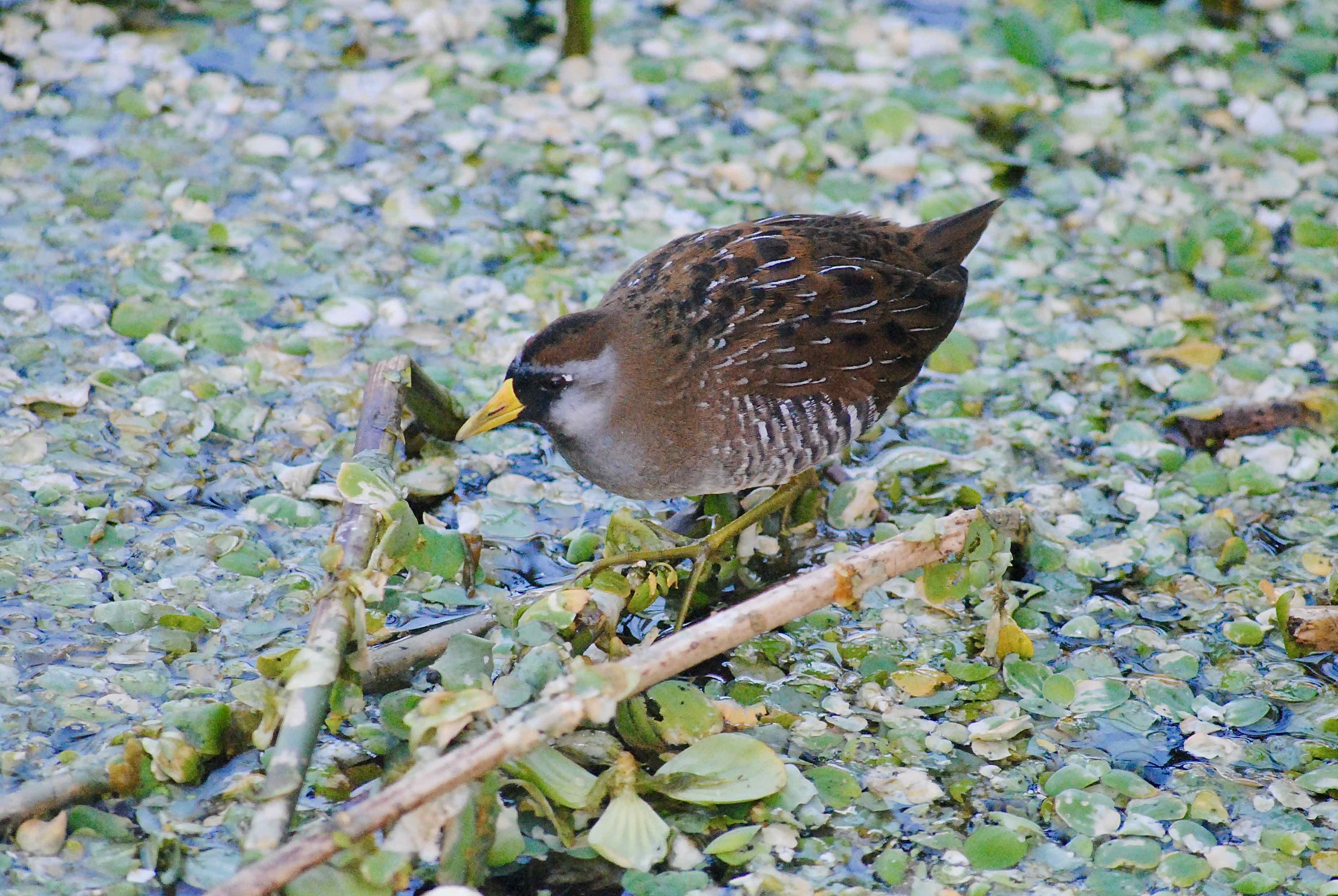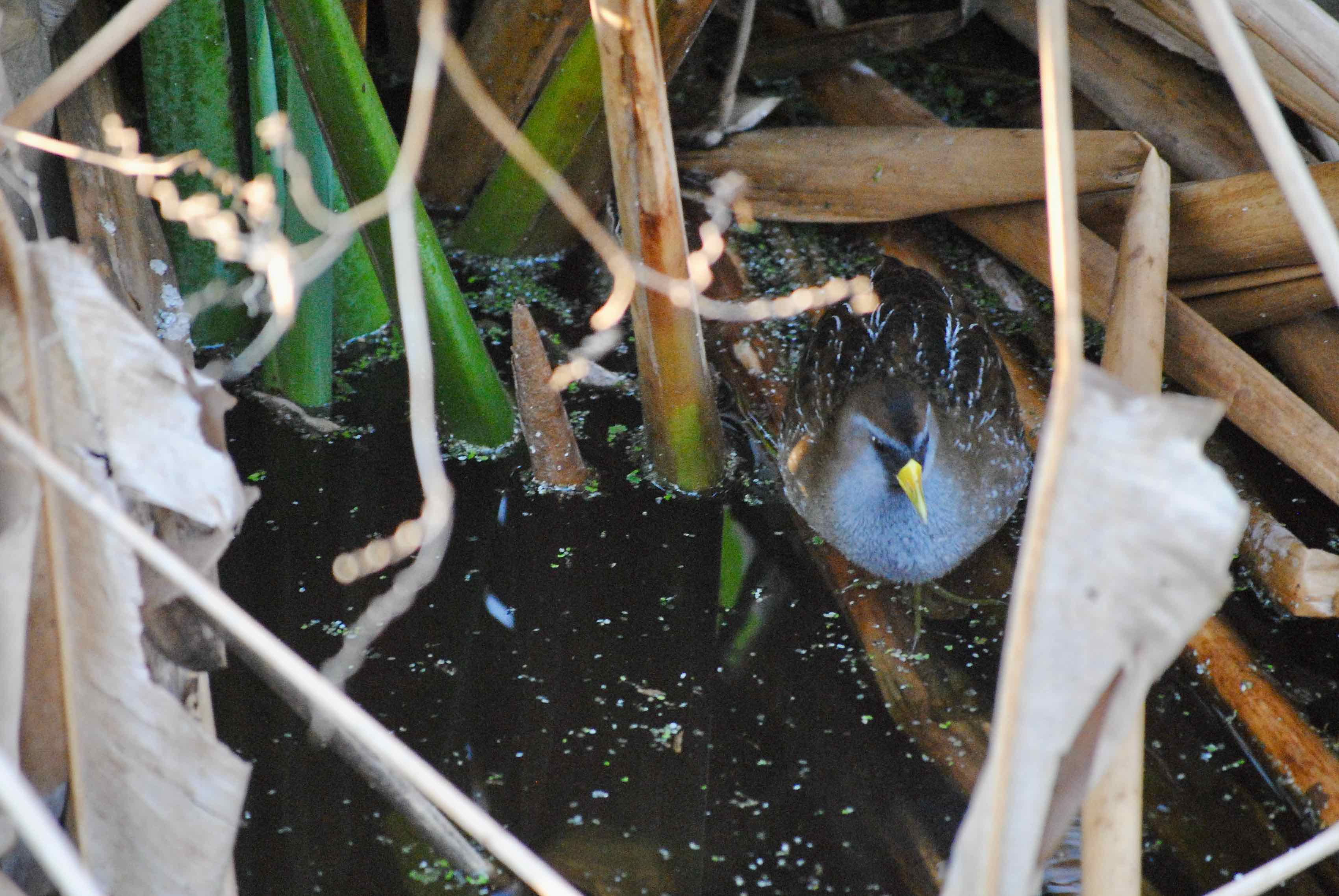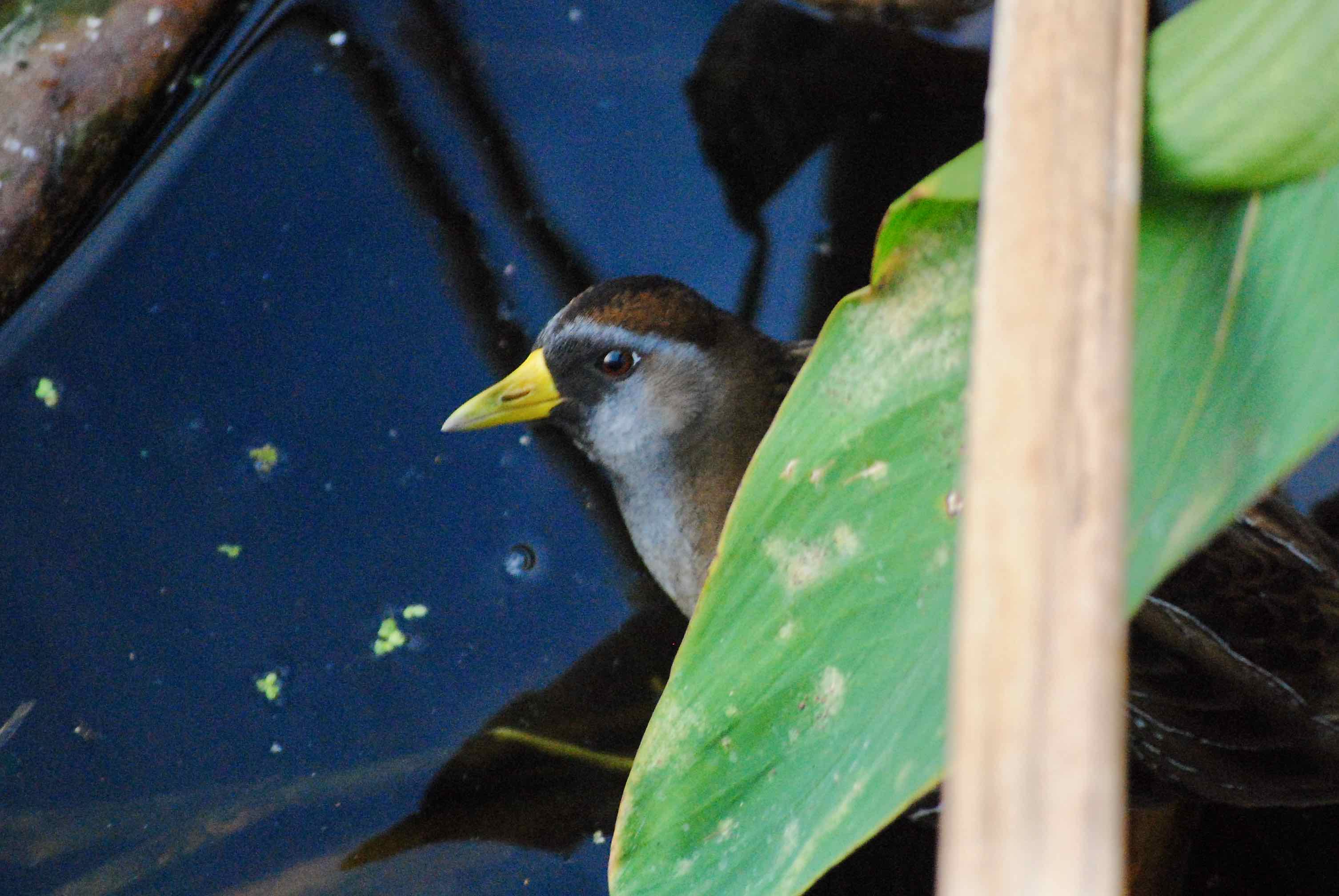
Sora, photographed at Green Cay Nature Center, Boynton Beach, Palm Beach County, in January 2024.
Pretty much anywhere you go in North America, there's a good chance of spotting a sora, Porzana carolina. But you're going to have to work for it, because soras tend to hang out in marshes and they make it their business not to be seen.
The sora is a member the rail family, which includes moorhens, coots and gallinules. In fact, the sora has the widest distribution of any rail in North America. Go up to the Yukon or Canada's Northwest Territories, and soras are there in summer. Visit Mexico and you'll see them in winter. They will migrate as far south as the Caribbean, Central America, Equador, Colombia and Venezuela. And of course, to sunny Florida. They'll also winter along the Atlantic Coast as far north as Delaware Bay, along the Gulf Coast to Texas, up the Rio Grande Valley to southern New Mexico, Arizona and California.
They've even managed on occasion to wander over the Atlantic to the British Isles — 10 recorded appearances between 1950 and 2007 — according to the British Trust for Ornithology. Which is pretty amazing, since soras, like most other rails, don't have much of a reputation as flyers.
Soras are marsh birds. They spend their winters among the bulrush, fireflag, duck potato and pickerel weed of Florida's wetlands. Their small size and habit of hiding in dense vegetation can make them difficult to spot even though they're one of the most common birds around.
When you do see one, you know instantly what you're looking at. Soras have a bright yellow, triangular bill and black face mask. They are slate gray around the face, neck and underneath with a mix of browns, blacks and whites above. Soras have the same large, wiry feet that moorhens and gallinules have, but they're less likely to perform the sort of highwire act on reedy vegetation that their cousins routinely do. Instead, they're more likely to be spotted creeping low along the ground.
Soras have a body length between 8 and 10 inches long. That triangular bill tells you that soras are likely to have seeds as a major component of their diet, and they do. But they'll also gobble the occasional invertebrate.
Soras nest in dense wetland vegetation inches above the water. Both male and female take part in constructing a cup-like nest made of dead vegetation.
Females lay between 10 and 12 eggs, so many for the small nest that they're frequently stacked on each other. Both parents are involved in rearing their offspring.
The eggs take about three weeks to hatch, but don't necessarily hatch all at the same time, requiring the parents to divvy up the workload, with one sitting on the eggs and the other caring for the hatchlings. First flight is in three to four weeks.
As noted previously, Soras are rails, members of Rallidae, along with coots, moorhens and gallinules.
Green Cay Nature Center



